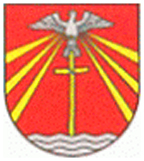
Courtesy of Jozef Joppa, Steven M. Osifchin, Dušan Petrišèák, Jan & Mirka Štefančík, & & The Greek Catholic Archbishop of Presov
Marriage Records 1803-1895 (Coming Soon)
In Memory of Ed Hlipala
Birth Records 1801-1894 (Coming Soon)
In Memory of Ed Hlipala
1869 Census (Coming Soon)
In Memory of Ed Hlipala
The center of the village is 453 meters above sea level. The surrounding area is between 440-893 meters above sea level. Legnava is situated in the northern part of the Lubovnianske hills in the valley of the river Poprad which boarders Poland. Legnava is situated on the geological formation of Maguras flys. There can be found many sandstone rocks in this area and the terrain is very rocky. There is a mineral spring here in Legnava and the northern part of the village has been deforested. Within the southern part of the village can be found pine forests. The soils that prevail in Legnava are brown forest soils. Legnava was incorporated as a village under a buying law after 1366 and is first mentioned in 1427. The village belonged to the landlords of Brezovica. In the Seventeenth century it belonged to Semsey and in the Eighteenth century to Szimay. In 1787 it had 41 dwellings and 298inhabitants. During 1828 Legnava held 59 houses and 445 inhabitants. The residents of the village were farmers, shepherds and worked in the forests. After 1918 they continued in farming, raised animals, and were employed in linen making and the manufacture of home utensils. Legnava formed a Co-op in 1953 but it went bankrupt in 1954. Today, Legnava residents are mostly private farmers with some of the inhabitants working in Stara Lubovna, and in Ostrava. The folk costume found in Legnava is a variant of the folk costumes found in the village of Jakubany.
Church:
Legnava has a Greek Catholic church which dates from 1833 and was built in neo-classical style.
Village Statistics:
These are the different names of the village over time:
1427 Langnow, 1772 Legnawa, 1808 Lehnava, 1920 Legnava, 1927 Legnava; Hungarian: Lagno, Hosszuvagas, German: Lengau, Latin: Legnava; legnavsky, Legnavcan-ka.
Administrative Structure:
Saris County; District, Stara Lubovna, Region Presov until 1960; District Presov, Eastern Slovakia Region, 1968 Region, Presov. Names of surrounding areas: Ku Kompaskemu, Na kut, Vyhon.
Population Statistics:
1869-468, 1880-523, 1890-503, 1900-460, 1910-437, 1921-485, 1930-461, 1940-473, 1948-440, 1961-445, 1970-356.
Acreage:
850 HA is the size of the village. HA is short for Hektar. 1 Hektar is 2.471 acres



